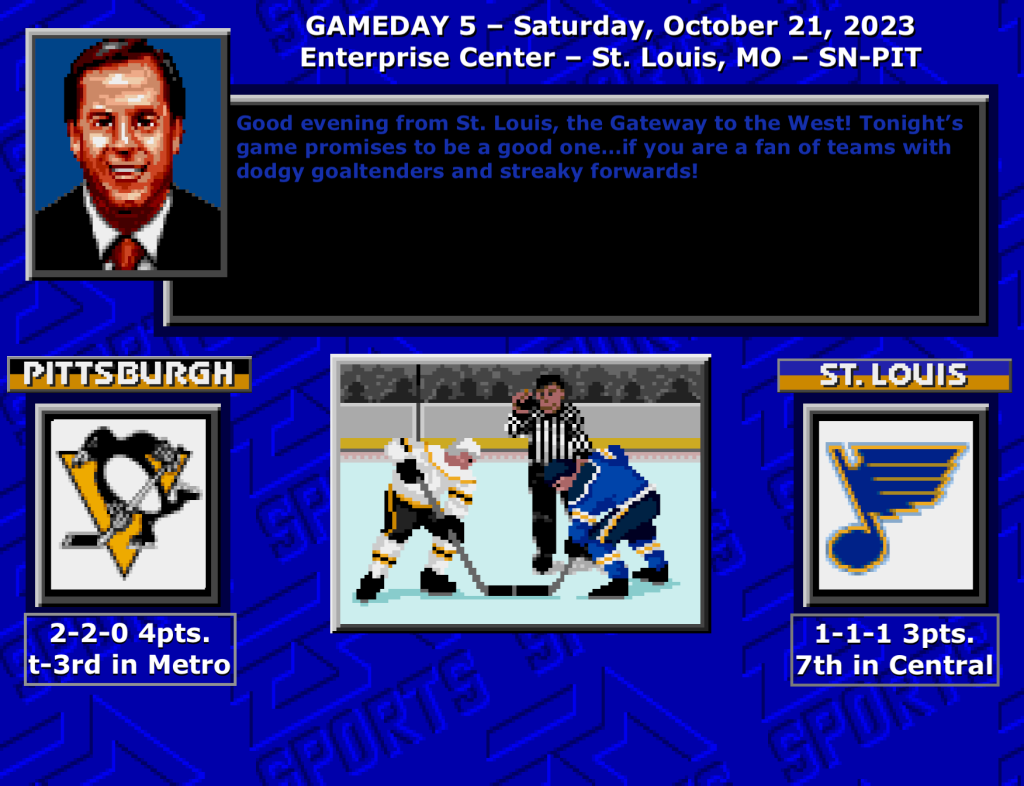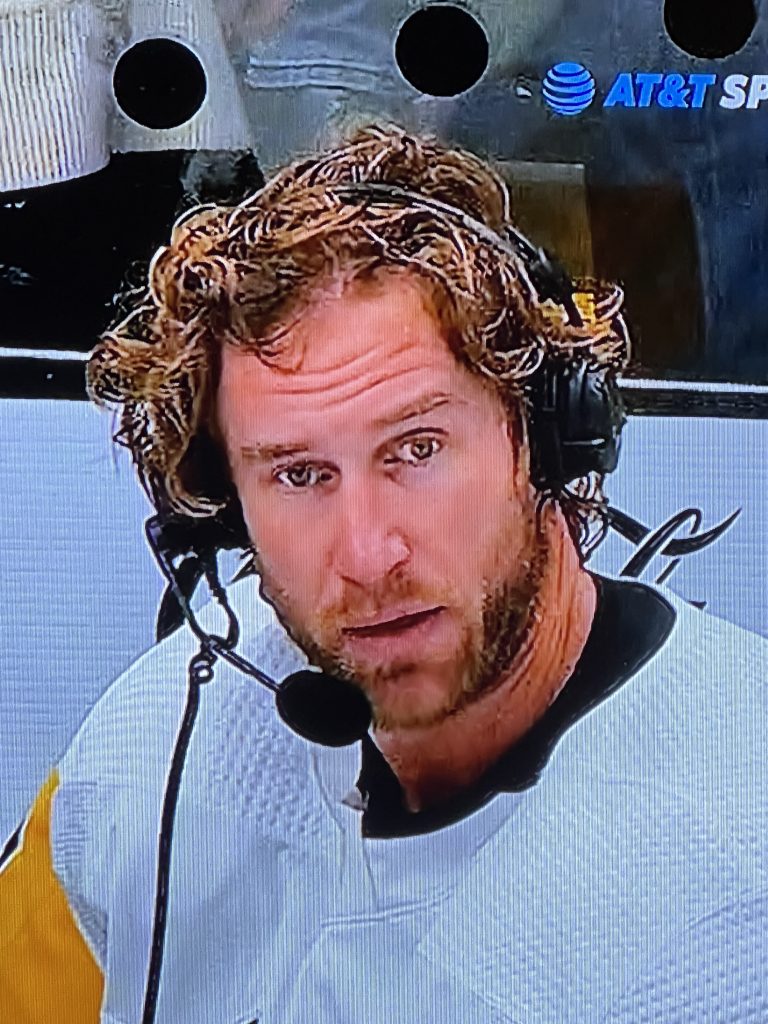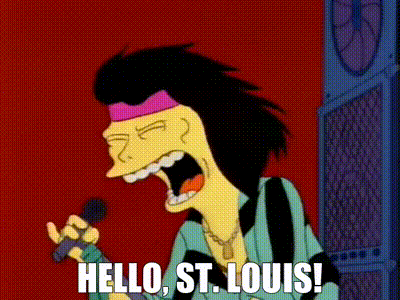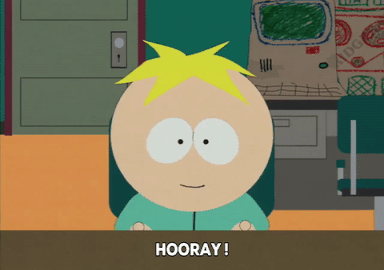

(Author’s note: our typical graphics guru, SouthSideGeno, is out on bereavement, so you’ll have to suffer with my awful Gameday header and sparse graphics that are maybe not so amusing.)
If nothing else, Wednesday’s 6-3 loss for the Pittsburgh Penguins visiting the Detroit Red Wings reminded me of one fact: if you play poorly for too long, you should expect to lose. Sometimes you play well and you still lose and, while that’s frustrating, at least you can have solace in the fact that you did your best and the process simply didn’t work out. In recent years the Penguins have been kings of dominating play and getting disappointing results. Thus far this season that sort of thing hasn’t happened yet: they’ve played one game where they played a full, 60 minute effort and won (4-0 over Washington), then three games where not having a full effort has led to mostly losing. Such was the case on Wednesday, where they were able to pull back a 4-1 deficit in the third period to get within one goal, but a couple of empty-netters against sank their ship.

As expected, the forward depth is of particular concern. The bottom six has very little in the way of offensive ability and that’s not going to be of much help if the top six is held off the scoresheet. If they can’t produce offensively they have to be the opposite defensively and prevent shots and goals, and that’s not going so great either. Right now Lars Eller’s and Jeff Carter’s lines have been on the ice for ~43% of the Penguins’ total even-strength ice time. When you look at the per 60 minutes data, they’ve faced only 1.5 shots more than their top six counterparts, but while the top six is outscoring their opponents 2-to-1 the bottom six is being outscored 2-to-1. Expected goals and scoring chances are also similarly heavily weighted against the bottom six. So, not only are they not doing anything offensively, they’re not doing all that well defensively either. They have to be able to at least hold the puck in their opponent’s end for a spell, and they aren’t doing that. With Jansen Harkins’ waiving on Thursday, it’ll be interesting to see if anyone is promoted from Wilkes-Barre/Scranton, and if they will have a discernible impact on Pittsburgh’s performance.

The Penguins beat the St. Louis Blues both times they met last season: a 6-2 Pittsburgh romp on December 3, 2022, featuring the last hat trick thus far in the career of Kasperi Kapanen (who was later waived and picked up by the Blues); and a 3-2 overtime win on February 25. Seven of those nine Penguins goals came against Jordan Bennington, who since his career year in 2018-19 where he finished second in Calder voting and fifth for the Vezina has had a steady decline in performance. Much of that was attributed to his personality, and he developed a reputation for being easily rattled. Last year his performance bottomed out as he went 27-27-6 with a .894 save percentage and a 3.31 goals against average; consequently the Blues had their worst season since the 2007-08 season. As of this writing he has been much better this season, stopping 63 out of 65 shots in his two appearances.

Last year St. Louis also had a rough season health-wise, with several key players (namely Torey Krug and and the departed Pavel Buchnevich) missing modest chunks of time. It was also an underperforming year from Brandon Saad, so overall it just wasn’t a good year for the Blues last year. They’ll need to see more typical production from the entire team if they’re to break back into the playoffs this season. Fortunately for them, the Central Division has perhaps the most potential for chaos as any in the NHL.

